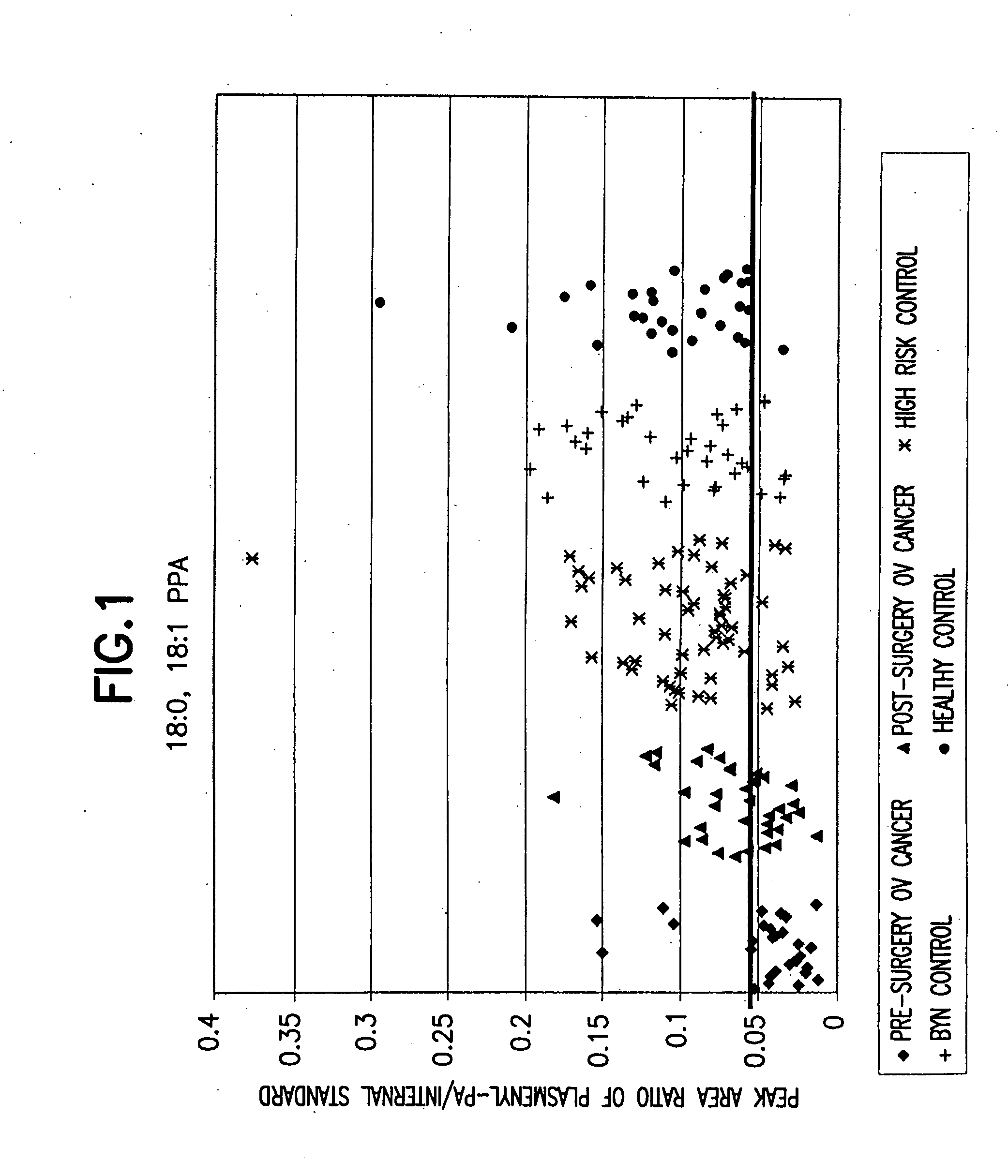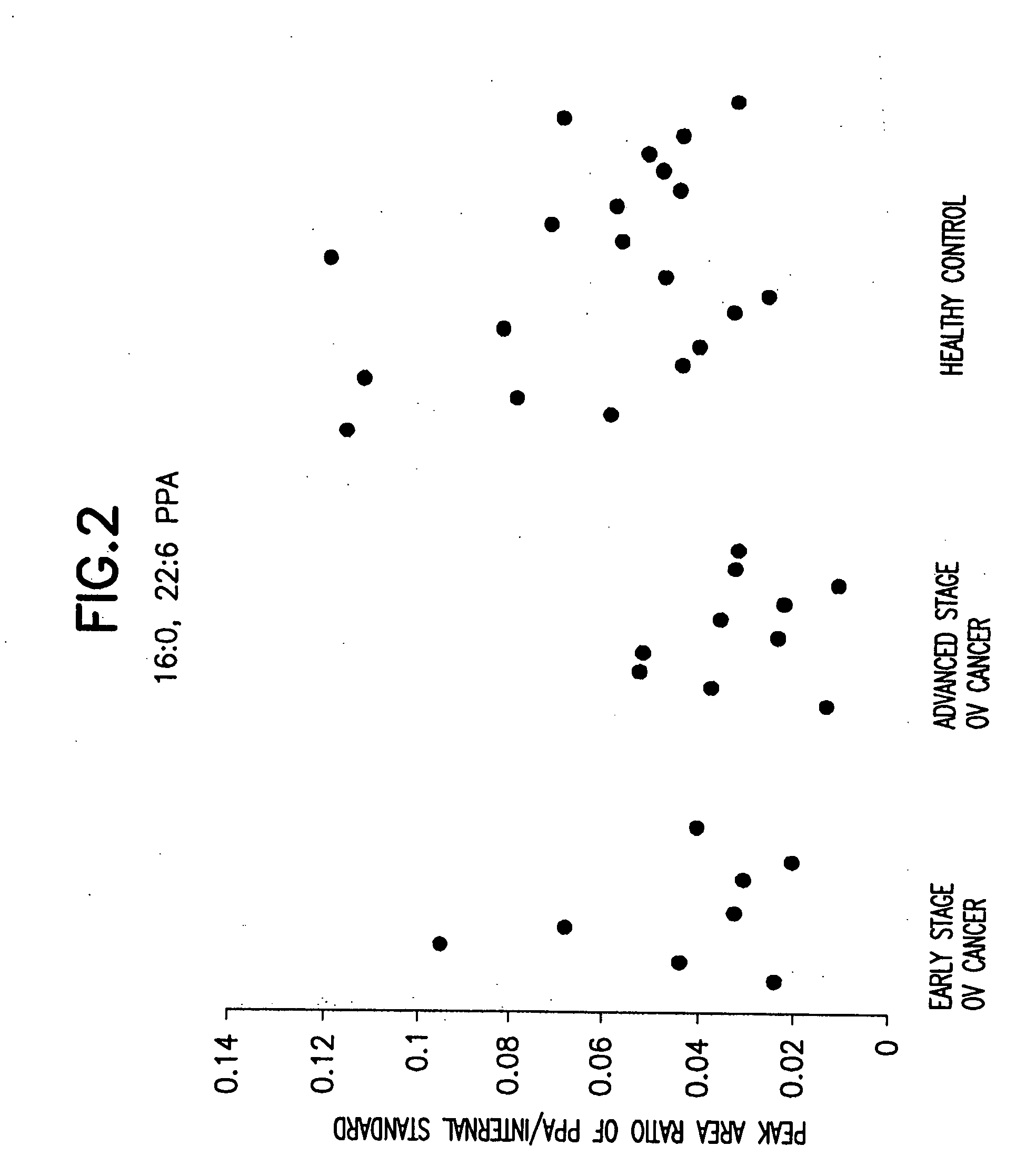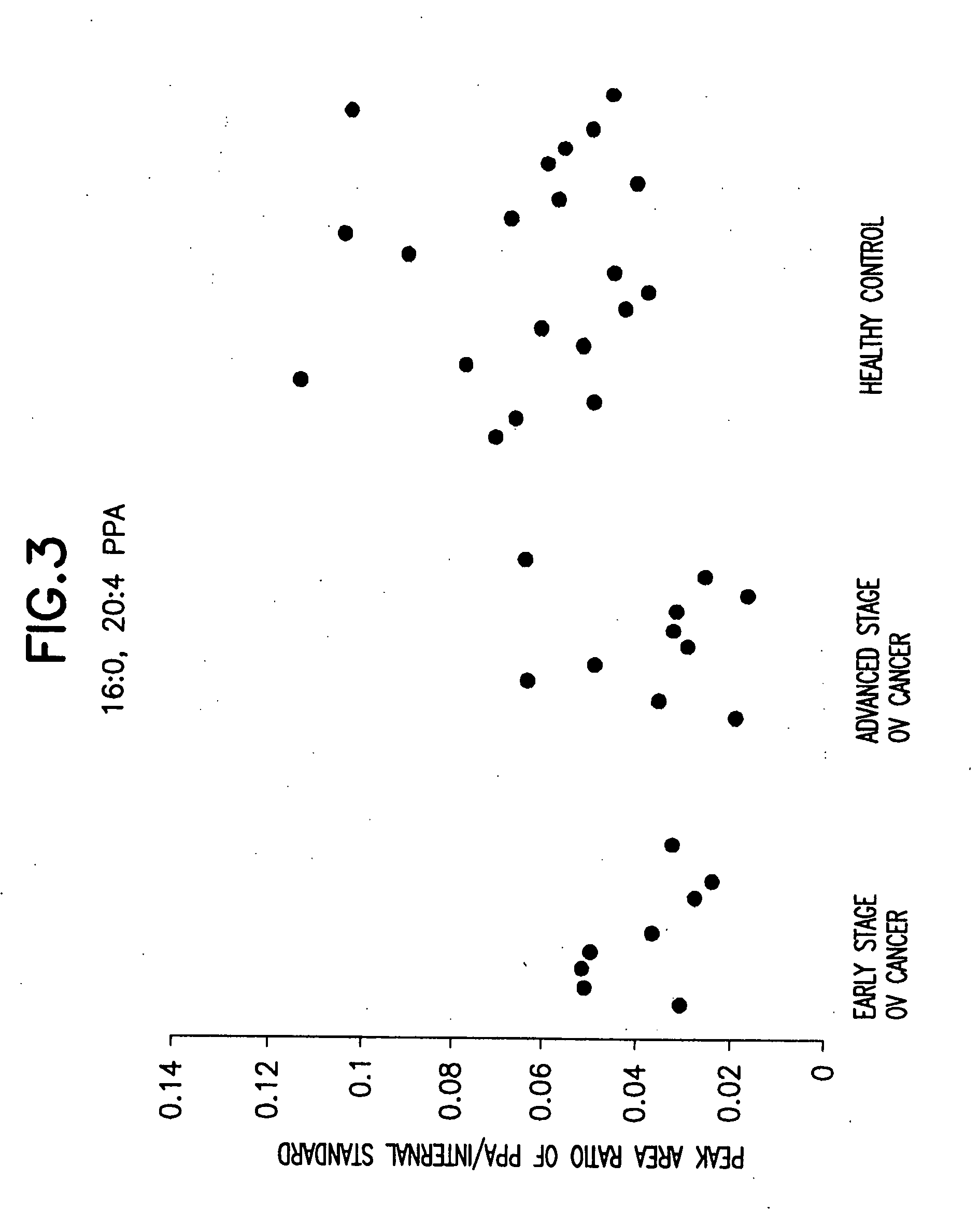Method for detecting ovarian cancer
a technology for ovarian cancer and ovaries, applied in the field of noninvasive methods for detecting or screening for ovarian cancer, can solve the problems of limited clinical application and the deadliest cancer, and achieve the effect of increasing the amount of plasmenyl-pa
- Summary
- Abstract
- Description
- Claims
- Application Information
AI Technical Summary
Benefits of technology
Problems solved by technology
Method used
Image
Examples
example 1
Example 1 (a)
Preparation of Plasmenyl-PA from Plasmenyl-PC
[0060] 0.6 μmol of plasmenyl-PC were placed into 90 μl of 50 mM Tris-HCI buffer, 10 mM CaCI2, 1% triton (pH 8.0) and sonicated for 10 minutes. 5 μl of PLD enzyme (10 units, 1 unit will liberate 1.0 μM of choline from L-α-phosphatidylcholine (egg yolk) per hour at pH 5.6 at 30° C.) were added and the reaction was carried out for 4 hours at 37° C. The reaction was stopped by adding 0.4 ml of the extraction solvent, chloroform / methanol (2:1, v / v). A Bligh-Dyer extraction was performed and the organic phase and the aqueous phase were dried under N2 respectively. See the following reaction scheme:
[0061] A crude plasmenyl-PA product was thus obtained and a mass spectrometric experiment was done to get the MRM (multiple reaction monitoring) transitions for plasmenyl-PA.
Example 1 (b)
Extraction of Lipids from Plasma or Serum Samples
[0062] Lipid extraction was done according to the following procedure: Add 100 μl 2 μg / ml 1, 2-di...
example 1 (
e)
Results
[0065] The levels of 16:0, 18:2 plasmenyl-PA in 196 serum samples were analyzed using the LC / ESI / MS / MS method described above. The results are shown in Table 1 and FIG. 1.
[0066] The levels of plasmenyl-PA were expressed as a peak area ratio of plasmenyl-PA / internal standard. As expected, the levels of 16:0, 18:2 plasmenyl-PA in the post-surgery ovarian cancer samples were much higher than the levels of 16:0, 18:2 plasmenyl-PA in the pre-surgery ovarian cancer samples, with a p-value =0.03, meaning that surgery can affect the levels of 16:0, 18:2 plasmenyl-PA in ovarian cancer patients. It is considered that the level of plasmenyl-PA is inversely proportionate to tumor size. Therefore, the levels of 16:0, 18:2 plasmenyl-PA can be used as a prognostic tool for ovarian cancer patients with treatment. The levels of 16:0, 18:2 plasmenyl-PA in the control samples were also much higher than pre-surgery ovarian cancer patients. The p values for the benign gynecological disease c...
example 2
Example 2 (a)
Samples
[0067] 38 serum samples were collected. These serum samples were divided into the following three groups: pre-surgery early stage ovarian (“ov”) cancer samples, pre-surgery advanced stage ovarian (“ov”) cancer samples, and healthy control samples.
PUM
 Login to View More
Login to View More Abstract
Description
Claims
Application Information
 Login to View More
Login to View More - R&D
- Intellectual Property
- Life Sciences
- Materials
- Tech Scout
- Unparalleled Data Quality
- Higher Quality Content
- 60% Fewer Hallucinations
Browse by: Latest US Patents, China's latest patents, Technical Efficacy Thesaurus, Application Domain, Technology Topic, Popular Technical Reports.
© 2025 PatSnap. All rights reserved.Legal|Privacy policy|Modern Slavery Act Transparency Statement|Sitemap|About US| Contact US: help@patsnap.com



